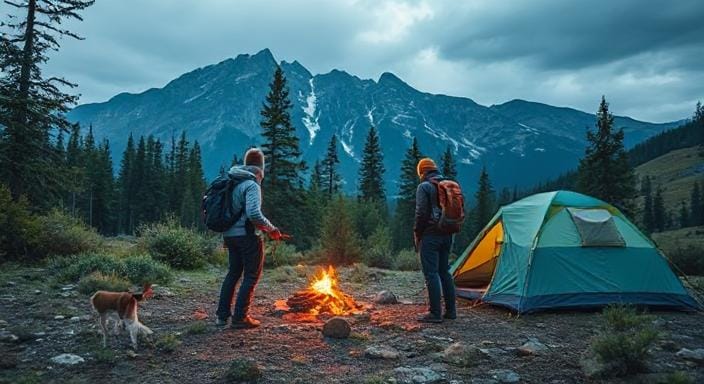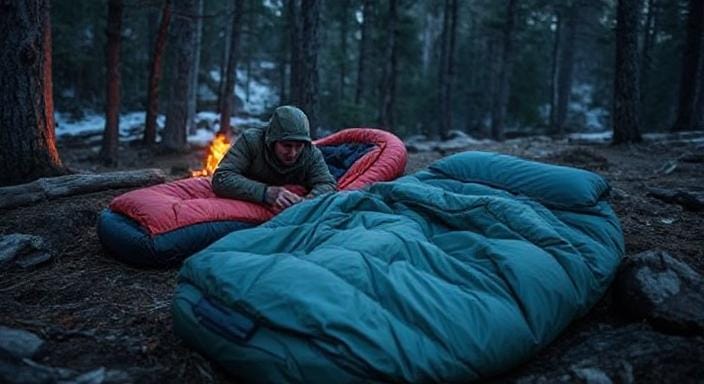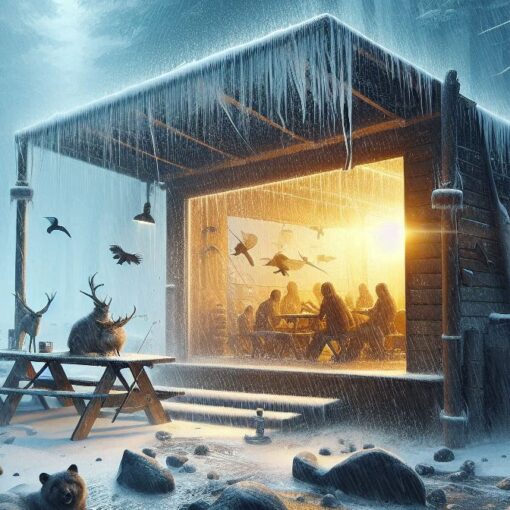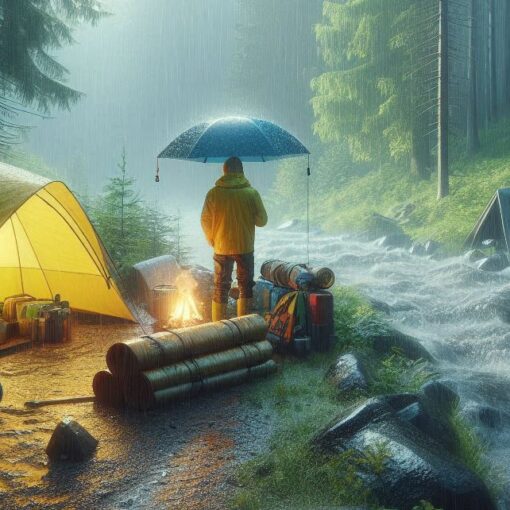Top Takeaways and Key Concepts
- Choose a flat, dry campsite away from wind and water for better sleep and safety.
- Invest in a quality sleeping bag and pad to stay warm and comfortable overnight.
- Wear moisture-wicking layers to control body temperature and prevent nighttime chills.
- Use earplugs or soothing sounds to block nighttime noise and sleep more peacefully.
- Create a cozy tent setup with blankets, snacks, and morning prep for comfort.
Summary of This Article
Please Note: This post may contain affiliate links. If you click one of them, we may receive a commission at no extra cost to you. As an Amazon Associate, I earn from qualifying purchases.
This article offers practical tips to help campers sleep comfortably outdoors and avoid sleepless, shivering nights in the wilderness. It emphasizes choosing a smart campsite location that’s flat, dry, and somewhat sheltered. Proper gear like a warm sleeping bag, sleeping pad, and moisture-wicking clothing makes a huge difference in warmth and comfort. It also suggests blocking distracting nighttime noises with earplugs or calming sounds to relax. Finally, making your tent cozy with blankets, snacks, and a simple morning routine ensures a happier, smoother camping experience from dusk till dawn.
Short Video Version of this Article
Ah, camping! The wonderful escape into nature, where we may trade our soft beds for sleeping bags and the calming sounds of crickets for the exciting sound of howling wind.
I love the concept of being one with nature, but there’s nothing worse than tossing and turning all night on a lumpy ground that feels like you’re trying to sleep on a sack of rocks.

Let’s talk about how to sleep well in the outdoors without waking up feeling like you’ve fought an enraged bear.
Pick Your Campsite Carefully

First things first: it’s quite important to choose the correct place. Picture this: you’ve hiked for kilometers to get to your campground, put up your tent, and finally settled down, only to find that you pitched it on top of what feels like a whole family of roots. They really seem like they’re trying out for a new reality program called “Survivor: Tent Edition.”
Find a flat place that isn’t too close to water (unless you want to wake up in the middle of a flood). If you can, look for a spot with some natural barriers, like trees or bushes, to keep the wind from blowing through like it’s auditioning for “The Fast and the Furious.”
And don’t forget to think about where the sun rises; no one wants to wake up at dawn to the sun’s bright rays!
Buy Good Sleeping Gear

Let’s speak about gear because if you’re going camping with just a flimsy blanket from when you were a kid, good luck with that! Buying good sleeping apparel can make the difference between waking up feeling great or like you got struck by a truck.
You need a decent sleeping bag. Find one that is rated for temperatures lower than what you expect, since it can get colder at night than you think. By the way, if you think those cute little “snugglers” would keep you warm when it gets below freezing, you might as well try cuddling with an ice cube!
You might also want to bring an inflatable sleeping pad or a hammock if you can find trees. These can make you feel better, going from “I’m regretting my life choices” to “This isn’t so bad!” Also, who wouldn’t want to feel like they’re floating above the ground?
Put on Layers Like an Onion
Now that we’ve set up our campsite and gear, let’s talk about layers of clothes. If you dress right, you can make sure you’ll be comfortable enough at night but not so hot that you feel like you’re stuck in a sauna.
Start with base layers that wick away moisture. These will keep sweat off your skin and stop that nice cold feeling that comes when the temperature drops at night. Next is insulation, such wool or fleece sweaters. But honestly, I feel more ready than Batman does when he gets ready for fight when I wear a lot of layers.
Last but not least, don’t forget about socks and caps. Yes, I said socks! It’s important to keep your hands and feet warm because if your toes are as frigid as popsicles in Antarctica, good luck getting any sleep!
Love White Noise
One of my favorite camping techniques is making white noise as I sleep, which is interesting. Nature has its own music, like crickets chirping peacefully and animals moving around at night. Sometimes, those noises can be really creepy.
If you get scared easily by every twig that snaps outside your tent (and believe me, there will be a lot of them), you might want to carry earplugs or download relaxing nature sounds to your phone before you go.
Don’t wear headphones while camping unless you want to miss out on seeing bears or, even worse, your friend asking for aid because he accidentally pitched his tent upside down!
Make Your Tent Comfortable
After you’ve set up camp and gotten into bed without tripping over anything, it’s time to make your tent feel warm. You’d be astonished at how much little things can make you more comfortable.
Bring extra blankets with you. They can be used as cushioning and to keep you warm at night. Fairy lights might not seem essential outside, but believe me, they add magic and keep the dark away (not really, as they won’t keep bears away).
And let’s see what else? Yes! Don’t forget the munchies! Having trail mix or granola bars close by means you’re less likely to have nightmares about hunger pangs waking you up from beautiful dreams.
Get Ready for Morning Happiness
Last but not least, get ready for a peaceful morning instead of a chaotic one! go into routines that will help you go back to reality after dreaming about marshmallows roasting over campfires.
Plan ahead by putting out your clothes before you hit the snooze button (because let’s be honest, we all snooze). Also, keep breakfast foods close by so you don’t become too irritated before coffee kicks in!
You will soon find out how easy it is to enjoy peaceful nights beneath the stars instead of dreading them completely by following these guidelines, which range from picking the right campgrounds to setting up your morning routine.
Frequently Asked Questions
1. How do I choose the best campsite for a good night’s sleep?
Select a flat, dry area away from rivers or low ground to avoid flooding and cold air pockets. Look for natural wind barriers like bushes or trees and avoid rocky or root-covered terrain that can make sleeping uncomfortable.
2. What kind of sleeping bag should I bring camping?
Choose a sleeping bag rated for temperatures lower than what you expect, since nights outdoors get colder fast. A well-insulated bag traps body heat, keeping you warm even during chilly weather.
3. Why is a sleeping pad important for camping?
A sleeping pad adds insulation and cushioning between you and the cold ground. It prevents heat loss, reduces pressure points, and makes sleeping much more comfortable—even on rough terrain.
4. What should I wear to stay warm while sleeping outside?
Wear moisture-wicking base layers to stay dry, followed by insulating layers like fleece or wool. Don’t forget warm socks and a hat—most body heat escapes through your feet and head while you sleep.
5. How can I block out noise while camping?
Use earplugs to reduce distracting sounds like wind, animals, or snoring tent buddies. You can also play soft white noise or nature sounds from your phone to relax—just avoid headphones for safety.
6. How do I make my tent more comfortable for sleeping?
Add extra blankets or a small pillow for comfort, and use cozy essentials like a sleeping liner. Keeping snacks nearby and using soft lighting, like fairy lights or a lantern, helps create a calm sleep space.
7. What can I do to wake up comfortably while camping?
Prepare for the morning by setting out clothes and breakfast the night before. This avoids scrambling in the cold and lets you start your day relaxed, warm, and ready for adventure.
Suggested External Resources:
Leave No Trace Principles
https://lnt.org/why/7-principles
How To Camp Comfortably
https://www.rei.com/learn/expert-advice/camping-comfort.html
The Ultimate Camping Checklist
https://www.campendium.com/blog/the-ultimate-camping-checklist

Kevin Collier is a seasoned outdoor enthusiast and writer for Trekbug.com, specializing in outdoor adventures, survival strategies, and prepping insights. With a deep love for nature and a commitment to self-sufficiency, Kevin empowers readers to embrace the wilderness confidently. He shares valuable tips, practical techniques, and inspiring stories, helping both novice and experienced adventurers develop essential skills for surviving and thriving in the great outdoors.





